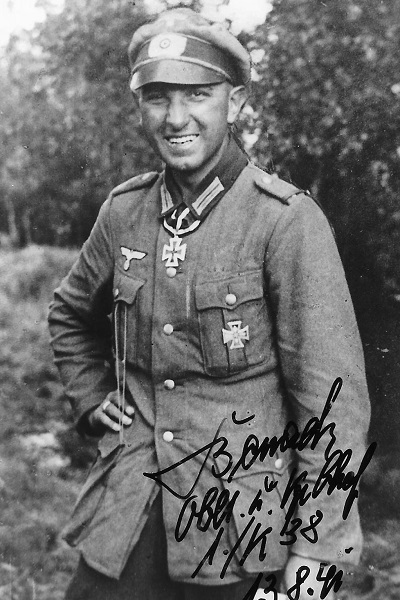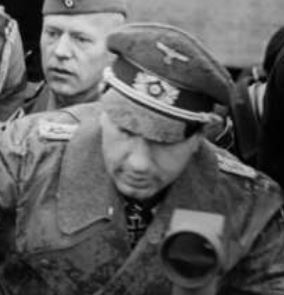Benack, Gerhard (Kradschützen-Bataillon 38)
- Date of birth:
- June 23rd, 1915 (Züllichau/Province of Brandenburg, Germany)
- Date of death:
- December 9th, 1994 (Koblenz/Rhineland-Palatinate, Germany)
- Nationality:
- German
Biography
Gerhard Benack reached the rank of Major. After the Second World War he served with the Bundeswehr from 1956 until 1971, reaching the rank of Oberstleutnant. From 1971 until 1977 he was Hauptgeschäftsführer "Schutzgemeinschaft Deutscher Wald".
Do you have more information about this person? Inform us!
- Period:
- Second World War (1939-1945)
- Awarded on:
- 1940
- Period:
- Second World War (1939-1945)
- Period:
- Second World War (1939-1945)
- Awarded on:
- 1941
- Period:
- Second World War (1939-1945)
- Awarded on:
- 1941
- Period:
- Second World War (1939-1945)
- Awarded on:
- July 3rd, 1941
- Period:
- Second World War (1939-1945)
- Rank:
- Oberleutnant (1st Lieutenant)
- Unit:
- Chef, 1. Kompanie, Kradschützen-Bataillon 38, 18. Infanterie-Division
- Awarded on:
- August 13th, 1941
Thus, during the early afternoon of that day, a new Kampfgruppe based around the Kradschützen of the 18. Infanterie-Division (mot) were ordered to strike out and take the bridge on their own. Although the Kampfgruppe initially made good progress it became stalled at around 16:00 near Kibysiai, just a few kilometres to the west of Merkine. In this situation Oberleutnant Benack decided to not become embroiled in the fighting here and instead thrust out towards the Niemen with follow-up units.
Despite the lack of protection on the left flank it was possible to cover the last few kilometres by driving at top speed. When Benack and the bulk of his Kompanie finally got to the bridge they saw a group of Red Army soldiers in the middle of the structure that were preparing it for demolition. The Kradschützen drove up to and over the structure, forcing the Red Army soldiers to retreat as they did so. As they were driving over the bridge Benack noticed a burning fuse. In response he jumped off his moving vehicle (suffering skin abrasions as he did so) before rushing back to the fuse. Seeing that he only had 50 seconds before the charge was set off, he wrapped the burning detonation chord around his left wrist and wrenched it out of the charge with all his might before throwing the chord into the Niemen river.
As this was happening the men of his unit reached the river’s eastern shore. They swiftly captured the partially burning village of Merkine and built a small bridgehead. With the capture of this important bridge an advance road was also opened up for the 12. and 19. Panzerdivisionen, enabling them to begin a swift advance into the Soviet Union.
Oberleutnant Benack would receive the Knight’s Cross for his actions here.
- Period:
- Second World War (1939-1945)
- Awarded on:
- 1942
Sources
- Photo 1: Known to STIWOT
- Photo 2:
- - FELLGIEBEL, W.P., Elite of theThird Reich, Helion & Company Limited, Solihull, 2003.
- Engelmann, J., Die 18. Infanterie- und Panzergrenadier-Division 1934-1945, Nebel Verlag GmbH, Eggolsheim, Deutschland, 2004
- Frank, R., Unsere Division in Sieg und Untergang: Erlebnisberichte von Angehörigen der 18. ID (mot.) und Panzer-Grenadier-Division, Selbstverlag, Gilching, Germany, 1988











